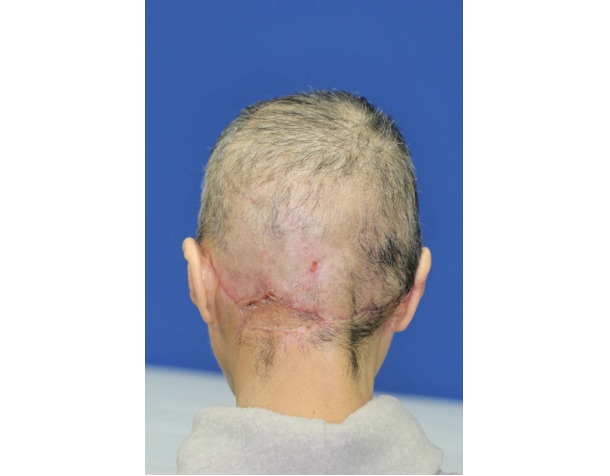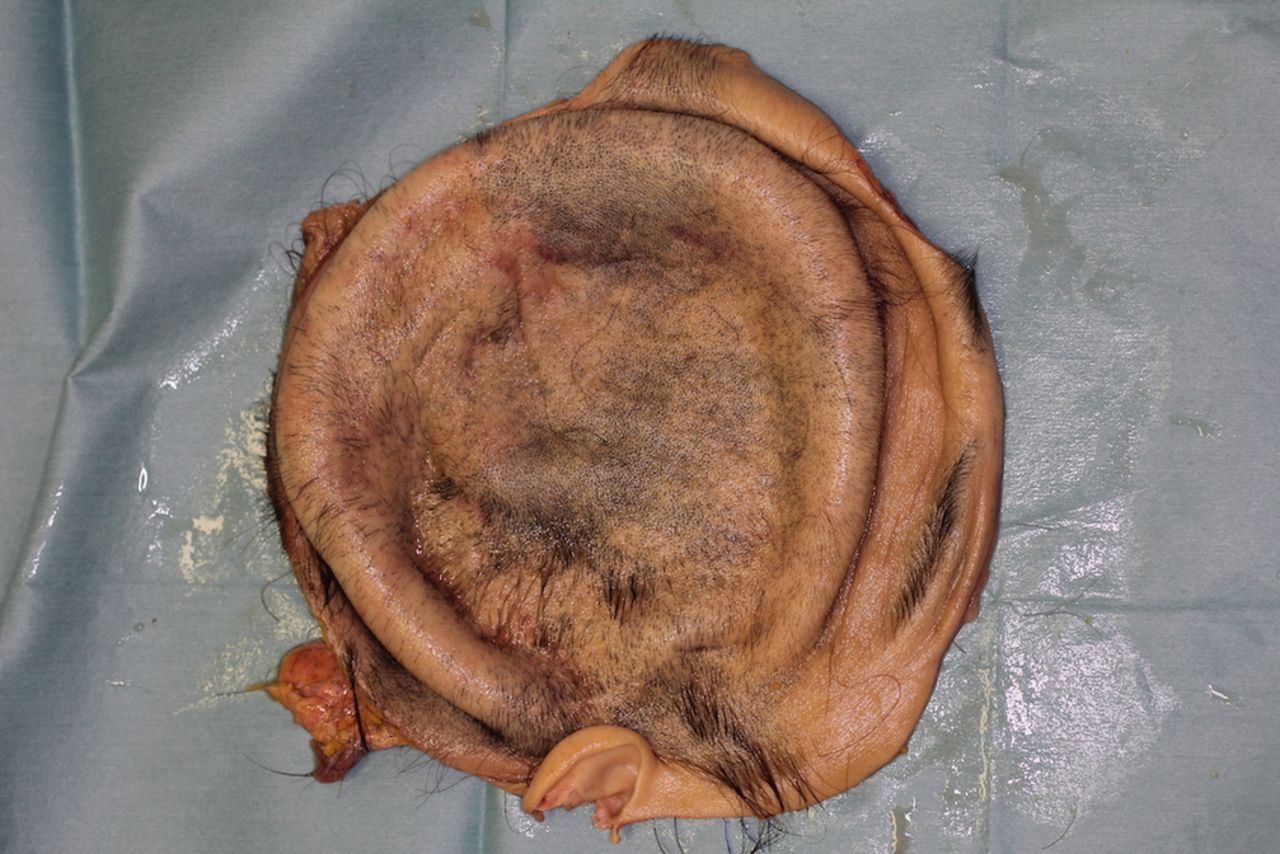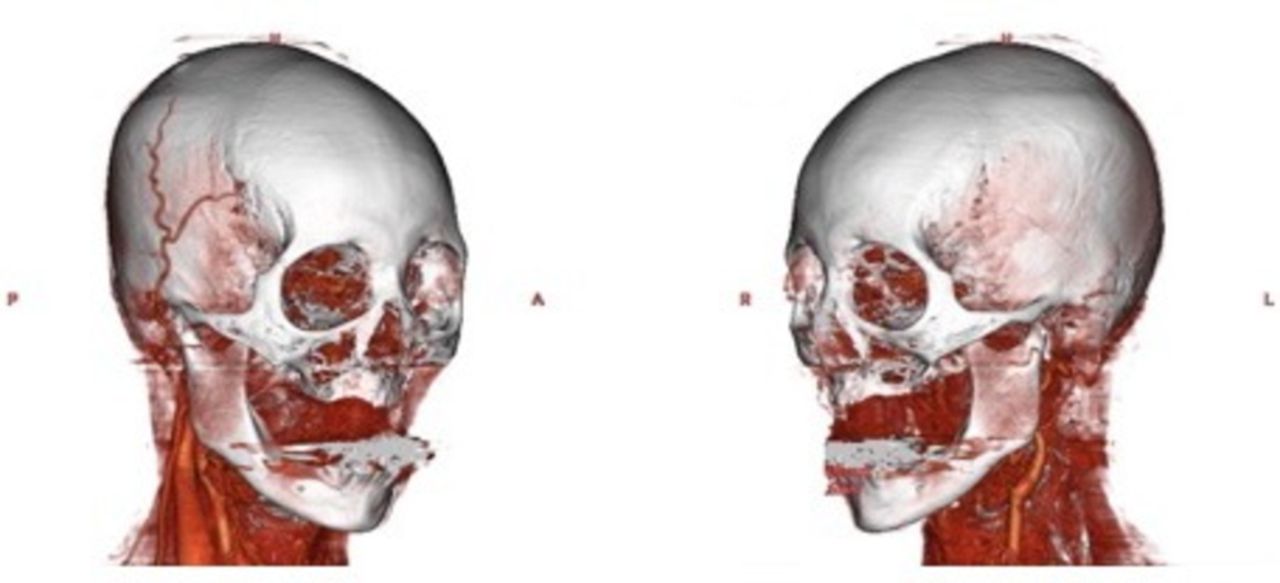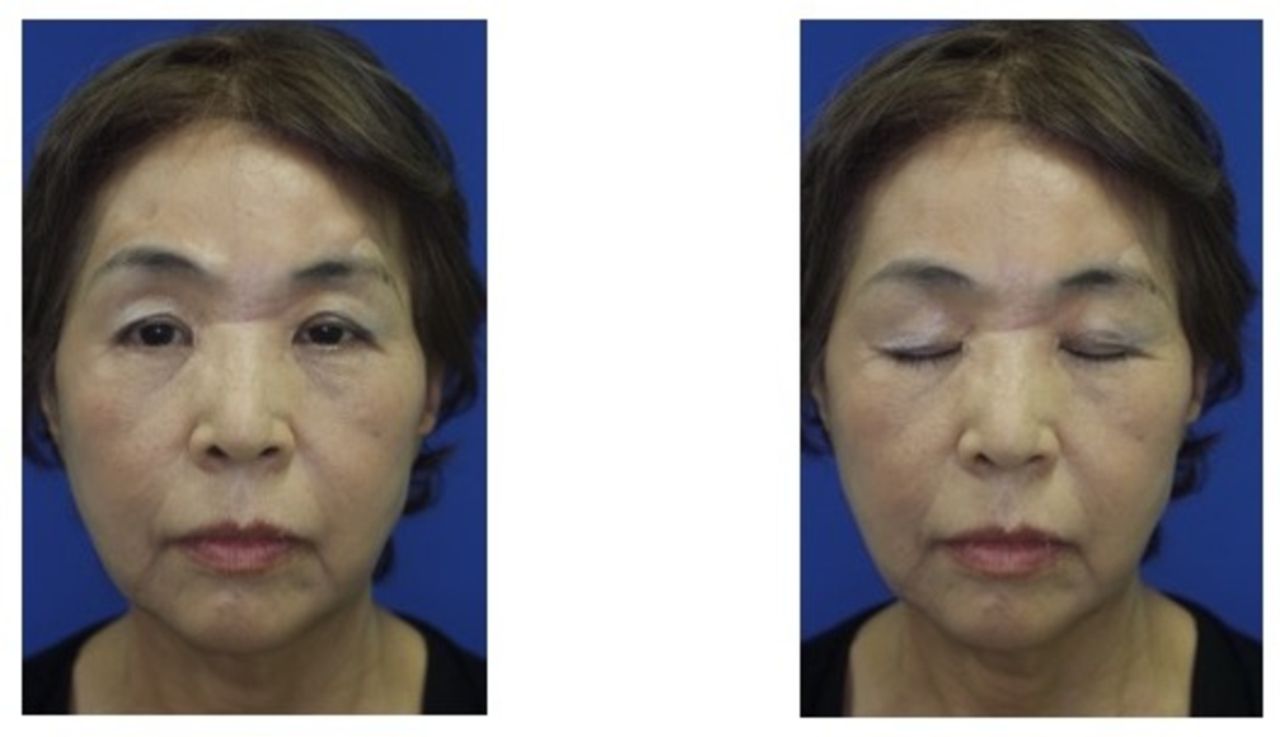Woman's Scalp Was Torn from Her Head in Horrifying Accident

Editor's Note: This story contains some graphic images.
In an awful accident, a woman in Japan had her entire scalp pulled off her head, according to a new report of the woman's case.
The accident occurred when the 64-year-old woman's long hair got caught in a spinning machine, tearing her scalp away from her skull. The machine tore a line around the woman's skull, level with the top of her nose. The top thirds of both of her ears were part of the scalp portion that was ripped away, as was her entire right eyebrow and half of her left eyebrow.
When the woman came to the hospital, she was clearly conscious, and her scalp was in a plastic bag surrounded with ice, said lead author Dr. Jun Karibe, a plastic surgeon at Yamanashi University Hospital in Japan, who treated the woman. At the hospital, the doctors removed the hair from the scalp and rinsed it with a saline, or salt water, solution, Karibe said. Then, the scalp was sterilized before the reattachment surgery began. [27 Oddest Case Reports]
Four hours after the injury took place, plastic surgeons had successfully reattached her scalp to her head, according to the report, which was published yesterday (Oct. 24) in the journal BMJ Case Reports.

The type of injury, which doctors refer to as "scalp avulsion," is extremely rare in Japan, according to the case report. Indeed, it was the first time that a "whole scalp avulsion" was reported in the country, Karibe told Live Science.
Though gruesome, scalp alvusion injuries are not life-threatening in most cases, Karibe said.
Sign up for the Live Science daily newsletter now
Get the world’s most fascinating discoveries delivered straight to your inbox.
Repairing the injury involves, in part, reattaching blood vessels and nerves in the scalp to the head. The doctors were able to successfully reattach four large main blood vessels, two on the right side of the head and two on the left. However, after the operation, the doctors found that blood flowed only through the vessels on the right side of the head — but that these vessels were able to adequately supply blood to the entire scalp. The doctors were unable to reattach any of the woman's nerves.

Two weeks after the operation, the woman developed a lesion, 3 by 4 centimeters (1.2 by 1.6 inches) near her left eye where her skin tissue was dying. The skin in this area was removed, and the doctors performed a skin graft, transferring healthy skin to the area from a different part of her body.
By two months after the initial operation, signs pointed to the woman making a good recovery: "Exuberant hair growth was evident," the doctors wrote, though they added that there was less hair growth on the left side of her head, perhaps due to trouble with the blood vessels on that side.
A year after the injury, the woman's hair had grown "sufficiently." In addition, she was able to open and close both of her eyelids and move her right eyebrow. And though the doctors weren't able to attach the woman's nerves, she regained sensation in the front and on both sides of her head, and was able to contract her forehead muscle — these improvements suggest that the nerves recovered on their own, according to the report.

"We were surprised to see the result of [the] operation," Karibe said. "My colleagues, including me, didn't expect this amazing recovery."
The woman was also pleased. She told the doctors she was "very satisfied with the aesthetic result," and noted that she had "no problems in [her] daily life activities," according to the report.
This story was updated to include quotes from the case report author.
Originally published on Live Science.











